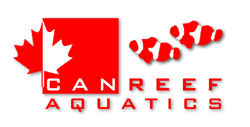 New tank question
New tank question
Hi my tank is fairly new cycle is at .25 ppm ammonia/0 nitrite/0 nitrate. Running live rock only at the moment. I'm planning to buy about 10 corals and 2 fishes and about an addictional 20lbs or so of live rock from a mature tank to my existing 70lbs. Will everything survive if I put it in all at once or will the new tank syndrome that I read about happen? Or does that only happens when u add a lot of fish not coral? Please advise me before I waste a bunch of money and kill everything
|

